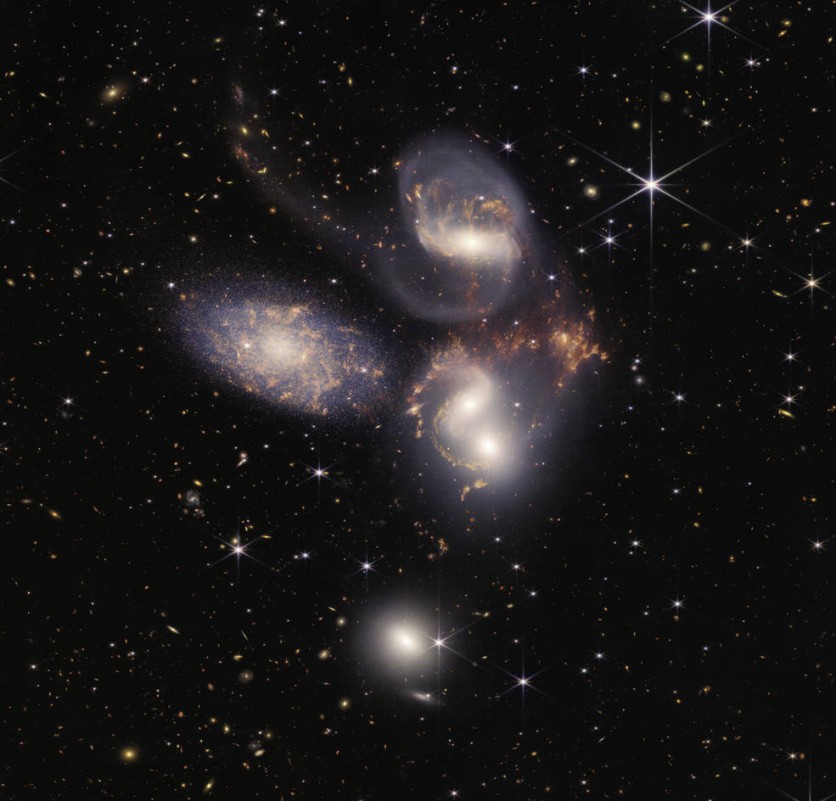A new era in astronomy has begun!
NASA unveiled the first science-quality snapshots of the cosmos from its James Webb Space Telescope on Tuesday, July 12, which ultimately star-struck and blew everyone's mind on the internet with how insanely detailed and stunning these pictures are.
Webb will explore beyond the bounds of our solar system to find new and strange planets, learn more about the evolution of the universe, and look for life in the galaxy. This definitely sounds like an adventurous science fiction turned into reality!
Although the Hubble Space Telescope has been providing us with the most breathtaking and magical views of the universe, James Webb is here to give us more, but with clearer, brighter, and more detailed photos!
Let's take a look at all the images that NASA's Webb has released and learn more about their stories!
A Nursery of Stars in Cosmic Cliffs

Who knew that there could be mountains and valleys in outer space?
According to NASA, the fringe of a nearby, young star-forming area called NGC 3324 in the Carina Nebula is featured in this beautiful scene while brimming with glittering stars. For the first time, previously hidden star birth regions are now visible in this image too!
This seemingly three-dimensional image is known as the Cosmic Cliffs, which appear to be rocky mountains on a moonlit night. The largest "peaks" in this photo are the edge of the enormous, gaseous cavity of NGC 3324, which is around 7 light-years high, according to NASA.
A Mosaic of Five Galaxies

Webb sheds new light on Stephan's Quintet, a visual cluster of five galaxies best remembered for its prominent appearance in the holiday classic movie, "It's a Wonderful Life." With a size equivalent to about one-fifth of the Moon's diameter, this gigantic mosaic is Webb's largest image to date!
Gravitational interactions cause the galaxies to produce glowing tails of gas, stars, and dust. This spectacular image shows the NGC 7318B galaxy crashing into the cluster and creating enormous shock waves.
Deepest View of the Universe

Webb's first released photo was historic in every sense. It was the most detailed and deepest infrared image of the far reaches of the universe to date. This incredibly detailed image features the galaxy cluster SMACS 0723.
What's even more fascinating is that this portion of the vast universe fills a piece of sky about the size of a grain of sand stretched out at arm's length!
Read also: 'Hubble vs James Webb Telescope:' Is NASA Webb's Deepest Image of the Universe Stunningly Clearer?
A Dying Star

This image of the Southern Ring Nebula depicts a formation of gas and dust, which is what nebulae typically are made of. A remarkably comprehensive image of the planet formation, showing the space components being expelled by the dying star, was generated thanks to James Webb's features.
For the first time, Webb has shown that the fainter star at the center of this image is shrouded in dust. This star has been ejecting rings of gas and dust in all directions for millions of years!
Gas Giant Planet

This exoplanet, known as "WASP-96 b," is a gas giant in the galaxy that revolves around a star similar to the Sun and has no direct analog to the Solar System.
WASP-96 b is 150 light-years from Earth in the constellation Phoenix, it has a diameter 1.2 times larger than Jupiter and a mass less than half that of Jupiter.
This article is owned by Tech Times
Written by Joaquin Victor Tacla
ⓒ 2026 TECHTIMES.com All rights reserved. Do not reproduce without permission.




